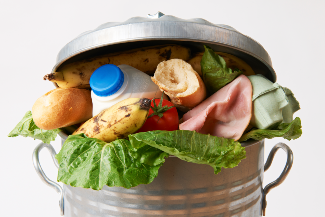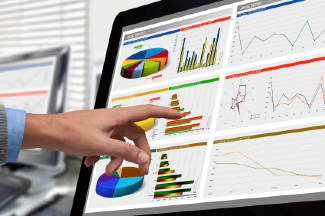Member State Page : Finland
Last updated on the 29/09/2023

Per capita: 116 kg in 2020
In total: 641 258 tonnes in 2020
In total: 693 662 tonnes in 2021

Primary production: 48 011 tonnes in 2020 Processing and manufacturing: 162 278 tonnes in 2020
Retail and other distribution of food: 57 555 tonnes in 2020
Restaurants and food services: 77 914 tonnes in 2020
Households: 295 500 tonnes in 2020

Reducing food waste at retail, foodservices, and households by 50% by 2030.
Target
Finland aims to reduce food waste at retail, foodservices, and households by 50% by 2030.
Measure
Finland has built a national food waste monitoring system through a dedicated project (2018-2021). The project has developed tools for monitoring and reporting on food losses and waste, with the aim to identify the most efficient measurement methods for each stage of the food chain. For example, the amount of food waste generated in households has been assessed by using three methodologies: compositional analysis, a diary-based study and a survey.
In the context of those projects, the Natural Resources Institute Finland (LUKE) has collected baseline data on the volumes of food losses and waste across the food supply chain, based on various quantification methods used over the past years (some of them put in place since 2008). The results indicate that the annual amount of food losses and waste is 643 million kg (edible fraction 351-376 million kg). Sectoral food loss and waste data is available in the Natural Resource Institute Finland webpages.
Regarding primary production the indicator products represents as production volume the most significant agricultural products in Finland and different product categories, like wheat products, vegetables (like carrot, potato, tomato, and cucumber), fish and meat products as well as milk and eggs. The data of food industry has been received from the big food industry companies which turnover represent 45 % of Finland’s´ food industry total turnover and they represent 7 different industry categories. Based on the analysis about 3,4 % of total production volume in food industry sector is food waste and about half of it, 1,8 % is edible food waste. Retail sectors´ data covered 96% of total sales volume/market in Finland for retail trade and the wholesale trade serving. The food waste data was reported to five product groups: 1) Fresh vegetables, root vegetables, potatoes, fruits, berries, 2) fresh bread and fresh bakery products, 3) meat and convenience food, fish, and seafood, 4) milk and milk products, cheeses, fats, eggs, 5) others. In retail trade and wholesale trade, food waste was 1.3 % of total sales volume in 2020. The food waste data of foodservice sector has been collected by online-diary method called Lukeloki (developed by Luke). 78 foodservice restaurants from different industries participated in the study. There where both line and portioned restaurants and both private (lunch and a la carte restaurants) and public operators (school, kindergarten, and hospital food). The study utilized the HORECA register, from which the number of companies and portions can be monitored (HORECA registry, 2017). In all places, food waste was caused in a total of 21% of prepared food. Households´ food waste data has been evaluated based on the waste composition analysis and diary study. Waste composition analysis (Municipality waste) included mixed and separately collected bio waste. The composition analysis coverded two regions, Helsinki Metropolian Area, and Tampere city area. About 300 households representing different kind of household types from different parts of Finland have been collected the data.
Act
The national waste plan to 2023 (2018) includes the aim to halve food waste by 2030. A roadmap to reduce food losses and waste is annexed to the national waste plan.
Food waste prevention measures have also been included in the governmental Report on Food policy (2018), as well as in the Report on medium-term climate policy plan for 2030 (2017), which highlights the reduction of food waste as a climate policy measure.
A voluntary commitment for material efficiency in the food sector has been signed by the Ministry of Agriculture and Forestry, the Ministry of Economic Affairs and Employment and the Ministry of Environment, as well as by the Finnish Food and Drink Industries' Federation, the Finnish Grocery Trade Association and the Finnish Packaging Association. The voluntary commitment aims to reduce the impacts of food preparation, distribution and consumption, and it includes relevant targets to reduce food waste (e.g. reduction of minimum 13% of food waste in retail by 2021, as compared to 2016 levels).
The Finnish Food Authority has prepared guidelines to facilitate donations of foodstuffs to food aid (2017, updated in 2019). The Finnish Hospitality Association (MaRa) has published guidelines for its members to reduce food loss and waste (2021).
At National food waste monitoring project lead by Natural Resources Institute Finland (Luke) is developing a national food waste monitoring system regarding the whole food chain. The development of the national food waste road map is also part of the projects´ key goals.
Changing consumer behaviour regarding food is an important component of the roadmap to reduce food losses and waste. The roadmap foresees measures to change the operating environment of food businesses, packaging and serving design, but also to carry out research in consumer behaviour. Efforts to reduce food waste at consumer level include communication initiatives to raise awareness and to educate consumers about the issue. Communication materials on date marking have been developed by the Finnish Food Agency, as well as other actors, in order to avoid consumer misunderstanding of the meaning of the dates and thus avoid food waste. Information and communication materials on the topic of food waste are provided online on websites such as Saasyödä and Hävikkiviikko. Government funded initiatives such as the Food Waste Week campaign and the Food Waste Battle school competition take place every year.
Educational activities in schools and early childhood education centres, as well as measures to reduce food waste in these institutions, are also part of the roadmap. The Ministry of Education and Culture and the Finnish National Agency for Education provide online and support materials to teach pupils about sustainable consumption, including the reduction of food waste. In the higher grades of the Finnish basic education system, pupils are taught home economics, covering aspects related to sustainable eating and food waste prevention.
National development project Food Waste Forum (2020-2023) raised consumers awareness of food waste and innovated new solutions and recommendations for different stakeholders to tackle household food waste in Finland. Consumer segmentation and nudging was used as an approach to innovate new ways to support consumers towards reducing food waste through, for instance, packaging design, modifying operating environments or developing various digital food waste solutions. The project was coordinated by the Consumers Union of Finland and funded by the Ministry of Agriculture and Forestry.
Ravintolafoorumi (Restaurant forum) is a website created by the Natural Resources Centre, where is shared information about food waste and its reduction methods in food services.
The Ministry of Economic Affairs and Employment and Business has supported the development of initiatives to reduce food waste, such as the Res-Q application (is a platform for selling surplus food from restaurants) and Fiksuruoka (an online store for selling surplus groceries at discounted prices).
Relevant resources
Links
